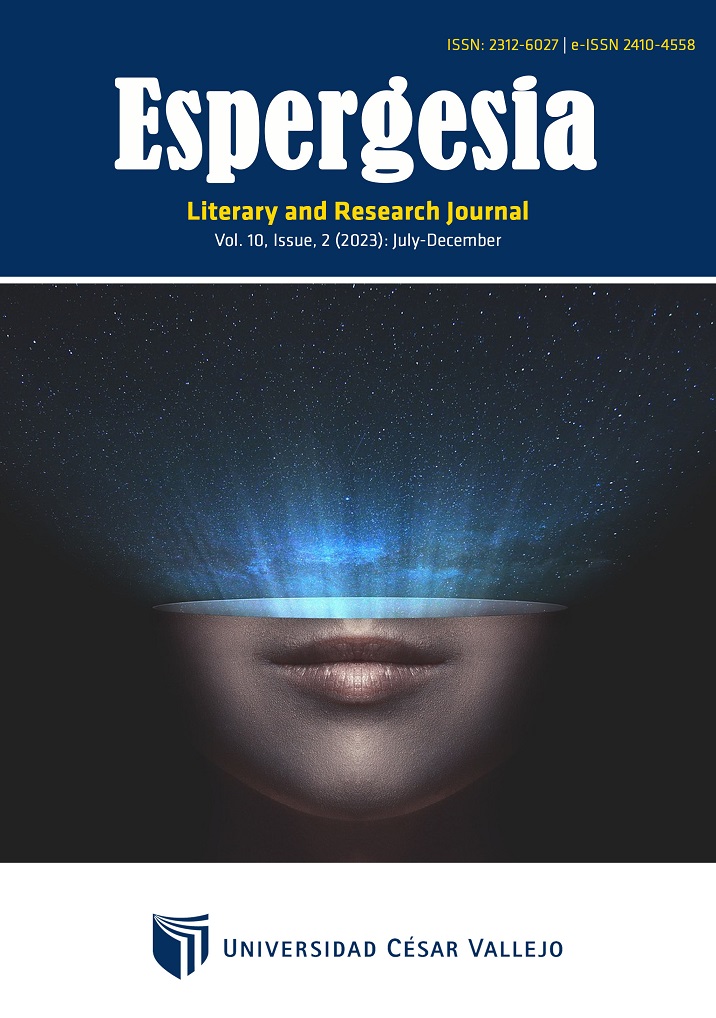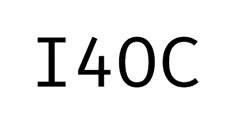Musical Language Developed in the Classroom through Rhythmic Exercises
DOI:
https://doi.org/10.18050/rev.espergesia.v10i2.2622Abstract
The lack of specialization and the frequent empiricism of some art teachers lead students to achieve short-term musical interpretation results. These outcomes, while seemingly positive at first glance, often don’t reflect a deep understanding, which can impact instrumental practice and subsequently deteriorate the cognitive musical process. The aim of this research was to implement a rhythmic exercise program for Theory and Analysis I students, with the intent of enhancing musical language. The research design was pre-experimental, focusing on a sample of 15 students from the first cycle of the Public Artistic Training Higher School of Bagua. A Likert-type scale based on two quantitative variables was used for evaluation. The statistical analysis was conducted using the SPSS v.25 software. In the pre-test, students achieved an arithmetic mean of 3.73, using KR20, indicating that 100% were at a low level. However, after the post-test, the same student cohort reached an average of 17.33 points, with 93.3% ranking between the high and very high levels in relation to the dependent variable. In summary, this research demonstrates that the rhythmic exercise program was effective in significantly developing musical language.
Keywords: Music; Musical Performance; Musical Language; Musical Instrument.
Downloads
References
Bernabé, M. (2015). Visión de El Lenguaje Musical y las Nuevas Tecnologías en la Educación Musical Profesional. El lenguaje musical y las nuevas tecnologías en las enseñanzas profesionales de Música. Revista Internacional de Tecnologías en la Educación, 2(2), 79-87. https://journals.eagora.org/revEDUTECH/article/download/966/530/3079
Bernabé, M. A. (2017). Lenguaje musical y la inteligencia musical en los estudiantes del primer grado de educación secundaria de la I.E. N° 3719 – 2017 [Tesis de Maestría, Escuela de Posgrado, Universidad César Vallejo]. Repositorio Institucional. https://repositorio.ucv.edu.pe/bitstream/handle/20.500.12692/14058/Macedo_ABF.pdf
Declaración de Helsinki. (2013). World Medical Association Declaration of Helsinki: Ethical Principles for Medical Research Involving Human Subjects. JAMA, 310(20), 2191–2194. https://doi.org/10.1001/JAMA.2013.281053
Hernández, R. (2010). Metodología de la investigación. http://petroquimex.com/PDF/SepOct17/Desarrolla-IMP-Metodologia.pdf
Ibáñez Gericke, T. V. (2012). El cuerpo en el proceso de enseñanza-aprendizaje de la lectura rítmica en la clase de Lenguaje Musical [Tesis de Maestría, Facultad de Artes, Escuela de Posgrado, Universidad de Chile]. Repositorio Institucional. https://repositorio.uchile.cl/handle/2250/111210
Palacios Castillo, V. E. (2019). El Desarrollo de la Expresión Musical en Niños Menores de 5 Años [Tesis de Segunda Especialidad, Escuela Profesional de Educación, Facultad de Ciencias Sociales, Universidad Nacional de Tumbes]. Repositorio Institucional. https://repositorio.untumbes.edu.pe/handle/20.500.12874/1441
Pucha Sivisapa, J. A. (2013). Elaboración de un texto de solfeo sustentado en ritmos Ecuatorianos, para el primer año del nivel técnico del conservatorio Salvador Bustamante Celi de la Ciudad de Loja [Tesis de Maestría, Universidad de Cuenca (Ecuador)]. Repositorio Institucional. https://repositorioslatinoamericanos.uchile.cl/handle/2250/1112152
Ruiz, E. B., Gómez, F. J. B., & Guerrero, I. M. M. (2017). Ansiedad de los alumnos en la asignatura de Lenguaje Musical y estrategias para reducirla. Revista Internacional de Educación Musical, 5, 41–48. http://www.revistaeducacionmusical.org/index.php/rem1/article/view/112
Rusinque Conejo, G. A. (2019). La euritmia, como estrategia didáctica: el ritmo en la música como proceso de formación de bandas musicales juveniles. In Universidad Militar Nueva Granada. http://hdl.handle.net/10654/32838
Salas, J. (2018). Estrategias de aprendizaje en el estudio del solfeo entonado en el curso de lenguaje y percepción musical. Investigación y postgrado, 33(1), 131-151. https://dialnet.unirioja.es/servlet/articulo?codigo=6736269
Vernia Carrasco, A. M., Gustems Carnicer, J., & Calderón Garrido, C. (2016). Ritmo y procesamiento temporal. Aportaciones de Jaques-Dalcroze al lenguaje musical. Magister, 28(1), 35–41. https://doi.org/10.1016/J.MAGIS.2016.06.003
Vernia Carrasco, A. M. (2014). El ritmo a través del cuerpo como herramienta de aprendizaje musical. La competencia rítmica. Universidad Jaume I (Castellón, España). http://repositori.uji.es/xmlui/handle/10234/153011
Downloads
Published
How to Cite
Issue
Section
License
Copyright (c) 2023 Allyson Armando León Jibaja, Osmer Agustín Campos Ugaz, Elvis Manuel Aponte León

This work is licensed under a Creative Commons Attribution 4.0 International License.


















